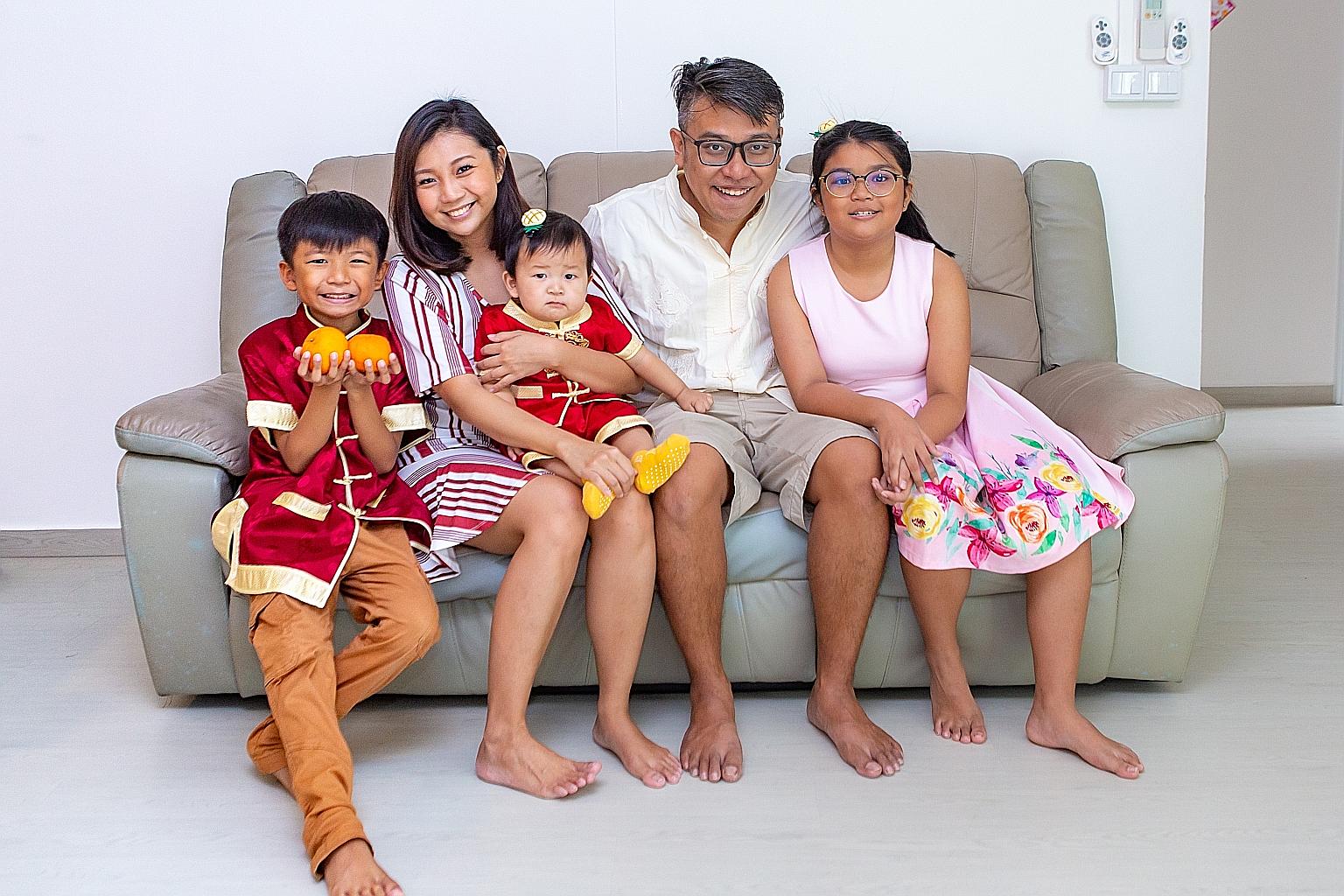Over 20,000 households have received proximity grant so far
Sign up now: Get ST's newsletters delivered to your inbox

Ms Lim Zihui with her husband Royston Yap, 37, and their children - Nathan, eight; Nigel, eight months old; and Noelyn, 11 - in their Punggol executive apartment, which is near her parents' home.
PHOTO: MONSTER STUDIO PHOTOGRAPHY
Vanessa Liu
Follow topic:
More than 20,000 households have benefited from the Proximity Housing Grant (PHG) since it was introduced in August 2015, the Housing Board revealed yesterday.
As at the end of last year, 20,100 households had received the grant, 9,100 more than at the end of 2017.
The grant was set up to encourage family support by helping to offset the cost of buying a resale flat for those opting to live with or close to their parents or children.
A year ago, changes were made to the eligibility criteria so that people living within 4km - instead of 2km - of parents or children could apply for the grant.
Rules for single applicants and parents of single applicants were also eased so that they could get a grant to live near each other, as opposed to living together.
Grants for those who choose to live with their parents or married children were increased by 50 per cent.
Ms Lim Zihui, 29, a medical sales representative who is married with three children, is one of those who have benefited from the changes.
Her family bought an executive apartment in Punggol last July, as their previous three-room flat was too small for them.
"We were looking for a place near my parents so that it would be easier in terms of logistics, like when we need help with the children," said Ms Lim, who was initially looking for a place in Pasir Ris until she realised the radius for the grant had been widened.
"Moving near my parents is a wiser choice. On weekends when we need to go out and run some errands, we can ask my parents to come over to help out. Sometimes, they take care of the children or come over for dinner."
From August 2015 to the end of last year, some 20,400 households had applied for the PHG - making up 28 per cent of the 73,100 resale applications registered in that time.
Out of these 20,400 households, 83 per cent were families, with the rest being single applicants.
Approximately $377 million has been disbursed to the 20,100 households under the PHG. The remaining applicants will receive the grants once their resale trans-actions have been completed.
Singapore Management University sociology professor Paulin Straughan said: "As our society ages, it is so important that we have in place a social structure that promotes and enables ageing-in-place. Having grown-up children live within close proximity will certainly facilitate a social support system where family can be the first responders in times of crisis or when assistance is needed.
"While we may not be in multi-generational households - given our small living spaces as well as the value placed on privacy and preference for the nuclear-family structure by younger married couples - this housing scheme allows us to facilitate a new form of extended family - of generations within the neighbourhood."
Under the PHG, all Singapore citizen families who buy a resale flat to live with parents or children can receive a grant of $30,000, while those buying a resale flat to live near them can get a grant of $20,000.
Eligible singles can receive the respective grants of $15,000 or $10,000 for living with or near their parents.
All Singaporeans are eligible for the PHG once, regardless of their household income, ownership of private property or whether they have received housing subsidies previously.
However, private property owners must dispose of their private properties within six months of the resale flat purchase.

